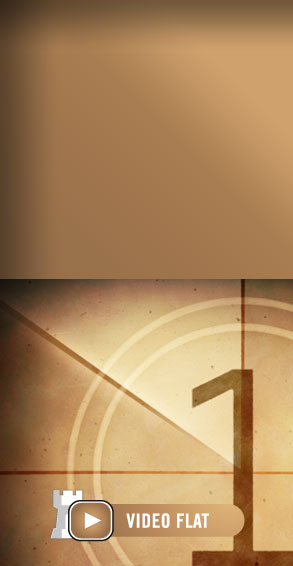 Svetozar
Gligorić: 2 Feb. 1923 – 14 Aug. 2012 Svetozar
Gligorić: 2 Feb. 1923 – 14 Aug. 2012
The legendary Serbian grandmaster Svetozar Gligorić died in Belgrade
on August 14 after suffering a stroke. He was 89 years old. Gligorić
as buried on Friday at 13.30 in the Alley of the Greats at Belgrade's
New Cemetery (Novom Groblju).
Gligorić came from a poor family in Belgrade and starting playing
at the age of 11, when he was taught by a boarder living in the house.
He made his first chess set by carving the corks of wine bottles, and
won his first tournament in 1938, four years after he had learnt the game.
He went on to become one of the world's leading players, and was one of
the world's top ten in the 1950s and 60s. He won the Yugoslav Championship
twelve time, and represented his country with great success in fifteen
Chess Olympiads.
Gligoric made significant contributions to the theory and practice of
the King’s Indian Defence and the Ruy Lopez. He was fluent in several
languages, and worked as a professional journalist and organiser of chess
tournaments. Besides chess his most enduring passions was music, and in
2011 he released a CD featuring compositions that drew on jazz, ballads
and rap. |
Remembering Svetozar Gligoric (Part two)
By Kiril Penušliski
While the two games in the
first part of this text were given with Gligoric‘s own analysis, the
next are presented with commentary by his colleague Rudolf Maric. They come
from his book Šahovske Minijature (Chess Miniatures), which is
truly a gem and by far the most entertaining chess books I have. Maric’s
comments and his sense of humour are infectious, but here he appears not only
in the role of a commentator, but also as an opponent and an eyewitness.
Game three, Maric-Gligoric
This game was played in Belgrade 1962. Gligoric meets a well prepared opponent,
one armed with a dangerous new plan prepared especially for him, but manages
to beat him over the board. The game and the wonderfully illuminating commentary
by Maric (shedding light not only the game, but also on what happened before
the opening moves were played) show the type of player Gliga was. But they also
demonstrate the admiration and the high regard his colleagues had for him. I
especially like the comments to move seven.

[Event "Belgrade"] [Site "Belgrade"] [Date "1962.??.??"] [Round "9"] [White
"Maric, Rudolf"] [Black "Gligoric, Svetozar"] [Result "0-1"] [ECO "B97"] [Annotator
"Maric,Rudolf"] [PlyCount "40"] [EventDate "1962.??.??"] [EventRounds "11"]
[EventCountry "YUG"] [Source "ChessBase"] {On theory's trail. Before my game
with Gligoric, before the game which went into the so called golden fond of
move-surprises, Grandmaster Matanovic told me: 'Come, try out a variant with
Toza. I will show you all the moves, plus mine own and Parma's novelty. If Toza
'bites' the variant is more than O.K'. We are talking about the Poisoned Pawn
Variation which, unjustly, doesn't carry Fuderer's name. I, an anti-theorist
who for book variants doesn't give a cent, I didn't for the life of me want
to walk the 'unsafe' trails of theory. But the glimpse of , for me, a paradoxically
won game over the lion of the tournament arenas, kept tempting me. In the end,
I relented and after a short 'theory training' went to battle. You know what,
I will be honest. I knew a lot about the variant, the way it was to be played,
the ideas, but still.... I felt like a medieval knight who broke his armour
and now had to go and fight with another man's sword and bow and arrow. The
way the game went speaks for itself. For a while I even enjoyed 'negative' fame.
Because of this game I found myself on the front pages and diagrams of almost
all chess magazines. But I also gained a good lesson, play with your own head,
even if you have to go through a wall!} 1. e4 c5 2. Nf3 {Alekhine's move 2.c3,
my favourite move, has a lot of disadvantages compared to the one played; but
only one advantage: it is on the side tracks of theory.} d6 3. d4 cxd4 4. Nxd4
Nf6 5. Nc3 a6 6. Bg5 e6 7. f4 Qb6 {Gliga is a Capablanca type of player. He
believes in his own strength, he believes in justice and truth in chess, and
that's why he doesn't use psychology in chess. He played this move because he
would have played it against anyone, because at that time he played it almost
always. That is why I could expect that the critical variant would come up and
that there would be no deviation from the established plan.} 8. Qd2 Qxb2 9.
Rb1 {We saw how Spassky, ten years later in his match with Fischer, tamed 'the
thieves of pawns' playing at this point 10. Nb3.} Qa3 10. Bxf6 gxf6 11. Be2
Nc6 12. Nxc6 { This move was the beginning of the analysis and it was first
seen in this game. } bxc6 13. O-O Qa5 $1 {I remember that this move was the
first surprise for me. I was expecting 13...Be7, but this intermezzo didn't
disrupt the prepared plan. } 14. Kh1 Be7 15. f5 exf5 $5 {This was also unforeseen.
According to the program I believe black was supposed to play 15...00 and then
16.e5 with a later Qh3 with a lot of threats. After a few more moves Gligoric
was supposed to resign, in a miniature! But as it can already be sensed, it
turned out to be a case of taking the bill without the bartender.} 16. exf5
Bxf5 {Who wants to win has to burn bridges behind. This move was played in that
style and it has to be played so not to put up with the bone in the throat,
the pawn on f5.} 17. Bf3 $2 {In the analysis after the game I found 17.Ba6!
which guaranteed white the better game, but I simply missed the boat. Later
Matanovic played that move against Bertok, the rook can't do anything to the
B because of 18. Rb8 Bd8 19.Qd6 and White would win. But now when that was missed,
White loses the initiative and also security, and that was the beginning of
the end.} O-O 18. Bxc6 Rac8 19. Bb7 {A move with 'sinister intentions' if 19...Rc3
then 20. Rf5! And miraculously, Gligoric goes for that. Incredible! Now, when
I know what he went into that combination I think that I should have played
19.Qd4!? and if Rc6 then 20. Nd5!} Rxc3 20. Rxf5 {I played the move and went
to get cigarettes. If had known what was waiting for me I would have bought
the whole tobacco shop....!} Rb3 $3 {I think it took me a good 15 minutes (when
in shock, does time go fast or slow?) while I tried to understand what I will
take, what will be taken from me, what will not be exchanged, will I or won't
I get mated. In the end I just raised my hands as a sign of resignation. What
goes around come around... Maric, Rudolf, Sahovske Minijature, Glas Slavonije,
Osjek, 1973, pp. 63-65.} 0-1

Game four, Smyslov-Gligoric
This is from the Candidates tournament in Belgrade 1962, and is one of my favourite
Gligoric games. Maric, who was present in the tournament hall when the game
was played, in only a few lines of text, manages to show the public’s
perception of Gligoric. One can imagine the playing venue exploding after Smyslov
resigned.

[Event "Candidates Tournament"] [Site "Bled/Zagreb/Belgrade"] [Date "1959.10.25"]
[Round "26"] [White "Smyslov, Vassily"] [Black "Gligoric, Svetozar"] [Result
"0-1"] [ECO "E61"] [Annotator "Maric,Rudolf"] [PlyCount "36"] [EventDate "1959.09.07"]
[EventRounds "28"] [EventCountry "CRO"] [Source "ChessBase"] {A champion on
his knees. When a world champion loses a game in 18 moves, it is a sensation.
And when that happens with a tough and solid giant like Vassya Smyslov, than
that game travels around the world with the speed of light, more than once!
It is hard to find a quicker defeat of a champion in all of chess history, and
no matter the circumstances, all the applaus belong to Gligoric.} 1. d4 Nf6
2. c4 g6 3. Nc3 Bg7 {Today [written in 1973] Gligoric more frequently takes
up the Grunfeld Defence, which in his opinion is one of Black's best defences.
With it he twice beat the super champion Botvinnik!} 4. Bg5 c5 5. dxc5 Na6 {Now
there is very little left from that classical Kings Indian Defence - only the
fianchetto bishop.} 6. g3 Nxc5 7. Bg2 d6 8. Rc1 O-O 9. b4 $2 {When world champion's
forget about development, what should the 'smaller calibres' say?} Ne6 10. Bd2
a5 $1 {From this moment on, until the end of the game, there will be no rest
for White. That run of the b-pawn leads to an almost forced defeat, to which
even the great Smyslov arrives in only eight moves!} 11. a3 axb4 12. axb4 Nd4
13. Nh3 $2 {There is some logic why White is trying to avoid Nf3, due to Nf3
with Bh3, but why he doesn't play e3! to 'chase away the devil' is unclear.}
Be6 14. Nd5 ({White is already too late for } 14. e3 {because} Nc6 15. b5 Ne5
{However, now the N on d4, which is touching all the weaknesses of his position,
will cost him his head.}) 14... Nxd5 15. cxd5 Bd7 {Threatening to mate the queen
with Ba4, which cannot be parried well. I was present at that round at the Dom
Sindikata [the playing venue] and I remember how the hall with 2000 spectators
was boiling like a volcano before an eruption. A great event was expected, the
catastrophe of the ex-champion of the world, but no one expected it to come
so soon, almost suddenly. And when 'the red giant' stretched out his hand to
Gliga, I thought that the walls would collapse... And it was only two hours
from the start of the game!} 16. Rc3 ({If} 16. O-O {then} Ba4 {and Nc2 wins
the exchange}) (16. Bc3 {while} Ba4 17. Qd3 Bb5 {wins the exchange and a pawn})
16... Ra2 17. Qb1 ({White is helpless} 17. O-O {is still bad because of} Nxe2+
{with Bc3 to follow}) 17... Qa8 18. Rc1 Bf5 {Although the white king didn't
castle he remained 'unhurt'. But now the queen is mated. If 19.e4 then Bh3 20.
Bh3 and Nf3 with a great harvest. Smyslov extended his hand. - Maric, Rudolf,
Sahovske Minijature, Glas Slavonije, Osijek, 1973, pp. 62-63} 0-1

Gligoric at the 1953 Candidates’ tournament in Neuhausen and Zurich
Photos provided by Edward Winter of Chess
Notes
Kiril Penušliski is a Macedonian art historian with tempestuous
hair, an expert in Italian Renaissance art and is supposedly writing his doctorate
(the last pages), but can on most nights be found playing on the Playchess.com
server. He learned to play chess at age six and formerly played second board
for the Penušliski family team (comprising of: first board Dr. Kiril Penušliski
(now deceased), second board Kiril Penušliski Jr., third board Ilija Penušliski
and fourth board Ilija Penušliski Jr.). His most lofty goal and ambition in
life is some day to learn how to avoid making mouse slips. See also: The
Contemporary Chess Art of Ilija Penušliski, by Kiril Penušliski.
Copyright
ChessBase


















 Svetozar
Gligorić: 2 Feb. 1923 – 14 Aug. 2012
Svetozar
Gligorić: 2 Feb. 1923 – 14 Aug. 2012




